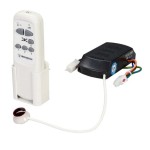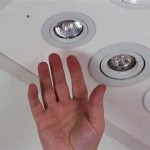Essential Aspects of Connecting a Ceiling Light
Properly connecting a ceiling light is essential for ensuring its safe and effective operation. Understanding the key aspects involved in this task is crucial to avoid potential hazards and achieve the desired illumination.
This article will delve into the essential aspects of connecting a ceiling light, providing a comprehensive guide to each step. By focusing on these key considerations, homeowners can successfully install and enjoy their ceiling lights with confidence.
Safety Considerations
Before commencing any electrical work, it's imperative to ensure your safety. Turn off the power at the circuit breaker or fuse box. Verify that the power is off by testing the wires with a voltage tester. Wear insulated gloves for added protection. Always follow electrical codes and consult an electrician if you lack experience or confidence.
Tools and Materials
Gather the necessary tools and materials: a screwdriver, wire strippers, electrical tape, and a ladder. You'll also need the ceiling light fixture, mounting hardware, and wire connectors. Ensure the wires are long enough to reach the junction box securely.
Mounting the Fixture
Position the mounting bracket of the fixture over the junction box and secure it using the provided screws. Align the fixture with the junction box and slide it into place. Tighten the screws to hold the fixture firmly in position.
Connecting the Wires
Strip about 1/2 inch of insulation from the ends of the wires. Match the white (neutral) wires and connect them together using a wire connector. Twist the connector tightly and secure it with electrical tape. Repeat this process for the black (hot) wires.
Grounding the Fixture
If the fixture has a ground wire (usually green or bare), connect it to the ground screw on the junction box. Ensure the connection is tight and secure.
Installing the Bulb
Insert the light bulb into the socket of the fixture and tighten it snugly. Avoid overtightening. Ensure the bulb is compatible with the fixture and voltage requirements.
Testing the Light
Turn on the power at the circuit breaker or fuse box. Test the light switch to ensure the ceiling light is functioning correctly. Check the brightness and ensure no flickering or buzzing occurs.
Conclusion
By carefully considering the essential aspects outlined above, homeowners can successfully connect a ceiling light, enhancing the ambiance and illumination of their homes. Remember to prioritize safety, gather the necessary tools and materials, mount the fixture, connect the wires, ground the fixture, install the bulb, and test the light. With proper planning and attention to detail, installing a ceiling light can be a rewarding and satisfying task.

Inside The Circuit Pendant Lighting Light Switch Wiring Homeowner Faqs

Jim Lawrence Flush Lights Fitting Guide

How To Install A Ceiling Light Fixture Diy Family Handyman

How To Install A Ceiling Light Fixture Diy Family Handyman

How To Install Ceiling Light Homeserve Usa

How To Hang A Ceiling Light

Advice On Ceiling Light Wiring English Forum Switzerland

Changing A Light Fitting

Replacing A Ceiling Fan Light With Regular Fixture Jlc

How To Replace A Ceiling Fan With Pendant Light
Related Posts








